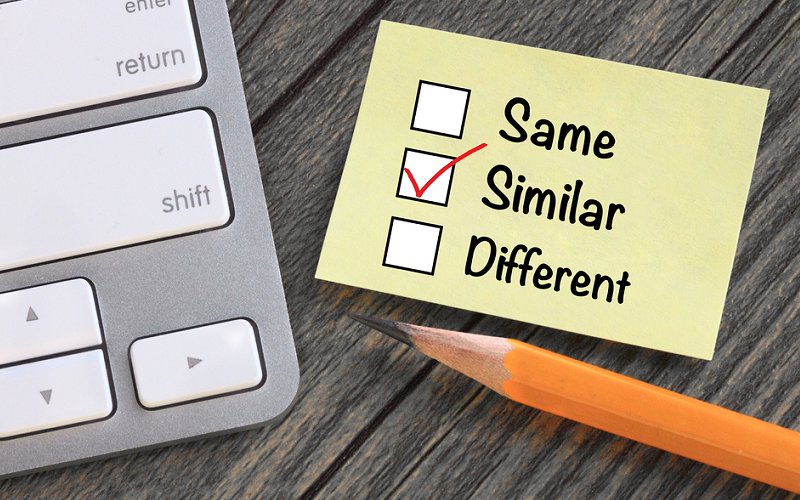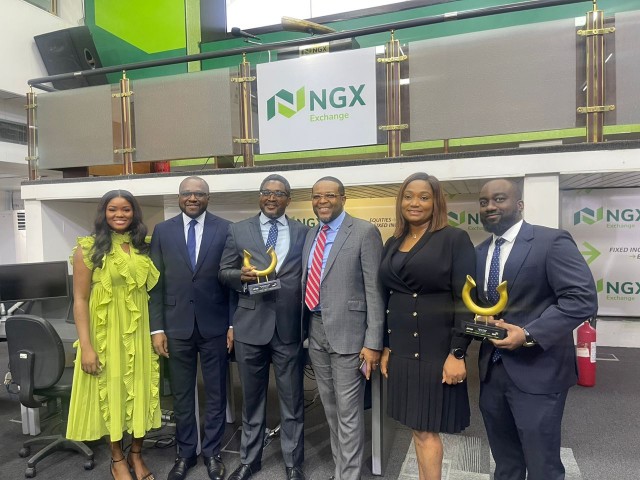Introduction.
The Nigerian Trade Marks Act[1] (Act) prohibits the registration of a trademark which is confusingly similar to an already existing trademark and which is likely to deceive or cause confusion in the course of trade[2]. While the provision of the law couldn’t be any clearer, the decision of whether a trademark is confusingly similar to an already existing trademark is often reserved for the interpretation of the courts and this has over the years, been the gravamen of many intellectual property infringement disputes. This article seeks to examine the factors considered by the courts/tribunals in deciding whether two trademarks are confusingly similar.
Factors considered in determining whether two trademarks are “Confusingly Similar”
It has been widely held that the true test of determining whether two marks are confusing similarity is “whether a person who sees a mark is likely to confuse it with an existing one, as to create the impression that the new trademark is the same as the existing one” [3]. This is considered from the point of view of a reasonable man with average intelligence and imperfect recollection because rarely will a purchaser of a product have the opportunity for detailed comparison. Thus, he must rely on his last recollection of the mark that he is used to seeing on the goods that he is used and seeking to buy.
Whilst the factors considered when deciding whether two trademarks are confusingly similar are in exhaustive and applied based on the fact of each case, we have discussed below some of these factors.
a. Physically Similar Trademarks
Where the physical features of two competing trademarks are similar, there is a higher chance of establishing that the marks are confusingly similar. The mere addition of a prefix, letter, font, style or adding more information to an already existing trademark maybe insufficient to distinguish a mark from an already existing trademark.
In the case of Virgin Enterprise Limited v Rich Day Beverages[4], the plaintiff registered the trademark “virgin” written in small letters and used for aerated waters and other non-alcoholic drinks. The defendant filed an application to register “VIRGIN TABLE WATER” all in capital letters. The court of appeal in holding that both marks were identical stated that an unwary purchaser who sees or has seen the proposed “VIRGIN TABLE WATER” will see same as identical with the existing trademark “virgin” and will believe that the proposed mark is the same as the existing one.

Also in the foreign case of Ouvah Seylon Estates Limited v UVA Ceylon Rubber Estates Limited, the plaintiff carried on business with the trademark “Ouvah Ceylon Estates Limited”. The defendants in ignorance of the existence of the plaintiff’s trademark obtained registration as “Uva Cetylon Ruber Estates Limited”. The court held that the names were so identical and were calculated to deceive and granted an injunction against the defendant.
Some trademarks which have been found by courts to be confusingly similar include: Casoria v Castoria[5], Trucool v Turcool, Hypnotiq v Hopnotic.
Simply comparing the physical features of two competing trademarks is insufficient in itself to arrive at a conclusion of whether two trademarks are confusingly similar. By virtue of the Act, the competing trademark should also be "likely to deceive or cause confusion in the course of trade". As a matter of fact, trademarks which appear to be physically similar may coexist in so far as the purchasing public is not confused[6].
b. Phonetically Similar Trademarks
The similarity between two competing trademarks must be considered with reference to the ear as well. In the case of British American Tobacco & Anor v In’t Tobacco & 2 Ors[7] the court held that in determining whether two trademarks are identical or of close resemblance, two senses of the human being are employed and these are the senses of the ear and eyes to arrive at a conclusion on the average memory arising from general recollection. Thus, sound is equally important [8].
Two competing trademarks may be visibly different but phonetically similar and in such case, may likely be held to be confusingly similar. In considering whether two trademarks are phonetically similar, thought may also be given to whether confusion will arise in the course of a telephone conversation or when order for products. It may also be necessary to consider what extent the customer has to call for goods in order to buy them. e.g. drinks are sold in lounges by calling it out, thus, sound will be given greater weight to products sold at a lounges than products sold in a supermarket where goods are handpicked by the consumer.

In the case of Beecham Group Ltd. and Ors. v Essdee Food Products Ltd, the plaintiffs/respondents, Beecham Group, who were the owners of the registered trademark ‘Lucozade’ filed an injunction restraining the defendant from infringing with the trademark ‘Glucos-Aid. At the trial court, it was held that ‘Glucos-Aid’ is confusingly similar in sound to the trademark ‘Lucozade’, and as such contravenes the provision of Section 5(1) of the Act. In the appeal suit by Essdee Foods at the Supreme Court, the counsel to the plaintiff cited the case of ‘Bell Sons and Co. V Godwin Alco & Others’ to support the point that the ears and the eyes must be together involved in the exercise of comparison. In the judgement, the Supreme Court dismissed the appeal and held that ‘Glucos-Aid’, in sound, is confusing to ‘Lucozade’ and it will undoubtedly mislead the public.
Also, in the case of Nigeria Distillers Limited v Gybo and sons & anor[9], the main issue was whether the name “Cacchus", which was stated on the label of the Defendants' tonic was similar or identical to the Plaintiff's mark, “Bacchus" trademark. The court while agreeing that both marks are phonetically similar held that, it was necessary to compare the two competing trademarks not only visually but also by the sound of the pronunciation.
Trademarks which have been held to be phonetically similar are: Seiko v Seyco, Ice Shine v Ishine etc.
c. Conceptually similar marks
Conceptually similar trademarks refer to whether two competing trademarks convey the same idea. Two trademarks may be said to be conceptually similar if they evoke identical or analogous semantic content[10]. For example, a trademark that contains the word ‘swift’ may be similar to a trademark that contains the word ‘fast’ because both evoke similar meanings (i.e., the two words are synonyms). Other examples include the use of different word marks with similar meaning in another language, different word marks writing in the same font or style, trademarks with the same get-up. If the same idea is conveyed by both trademarks and it is thought that some purchasers are likely to remember the trade marks by the idea conveyed rather than by the specific features of the trademarks, use of the trademarks may lead to confusion.

In the case of U.K. Tobacco Co. Ltd v. Carreras Ltd[11] the plaintiff marketed a popular cigarette known as ‘Bandmaster’ which has a white man in a bandmaster’s uniform on its pack. Subsequently, the defendant started to import and market another brand of cigarette known as ‘Barrister’ which also had a white man in a barrister’s wig and gown on its pack. The trademarks were held to be confusingly similar and the defendant was restrained from importing and marketing the Barrister brand. This was especially due to the fact that among the local population (in Lagos, Nigeria) at the time, the Bandmaster cigarette was called ‘Cigarette Oloyinbo,’ in essence, ‘the Cigarette that had a white man on it.’
The dispute involving the trademarks RED BARON and BARON ROJO in europe is also a good example of conceptual similarity. The tribunal held that a Spanish consumer would associate the words RED BARON with the words BARON ROJO as “red” is a common English word, and Spanish consumers would be familiar with this word. Accordingly, the trademarks were held to be conceptually identical and a likelihood of confusion was found.
Other trademarks which have been considered conceptually similar include: Magic Hour v Magic Times, Pink Lady v Lady in Rose.
d. Class of goods or service in which two competing trademarks are used.
The connection between the similarity of the two trademarks and the relative closeness of the goods or services in which it is used is an important factor considered by courts in deciding whether the two competing marks are similar. Where two competing trademarks are used in the same class, there is a high chance that the public would be confused due to the overlap of the market. Two trademarks may be similar but used for different categories of good and in such case, will be less likely to cause confusion or deceive.
Trademarks used for goods which are not in the same class but are in classes related to each other are also likely to be considered confusingly similar. Food products and drinks products, for example, are likely to attract similar customers and so the risk of confusion is higher. Where one of the competing trademarks is used for telecommunication and the other for cosmetics, it is possible that an identical brand name could be acceptable as it seems unlikely that their markets would be substantially made up of similar consumers. In these situations, the court takes into consideration whether or not the buyers will reasonably expect the products to come from the same source.
Examples of marks which coexist but are used for different products include: Notre Dame French cheese v Notre Dame University, Domino’s pizza v Domino Sugar, Dove chocolate v Dove Chocolate.
e. Marks with a degree of notoriety or familiarity
The degree of notoriety or popularity of a trademark influences the decision of whether two trademarks will be said to be confusingly similar. When a trademark is popular and extensively used, relying on the fact that the other competing trademark is used for an unrelated product may be insufficient. This is because consumers are more likely to expect an expansion of the use of the trademark. This was buttressed in the case of Quality Inns International Inc. v. McDonalds Corporation. In this case, McDonald Corporation instituted an action against Quality Inn for using the name "McSleep" because it infringed on McDonald's family of marks that are characterized by the use of the prefix "Mc" combined with a generic word. Quality Inn's in its defence stated that McDonald's cannot claim ownership over every formative of "Mc" plus a generic word, and that also that the trademarks were used for two different products. While the Court agreed that the logos, design, color and shape, as well as the facilities, are not confusingly similar, the court held that is the use of the name McSleep Inn suggests an ownership, sponsorship, or association with McDonald's and held that the two marks were confusingly similar[12].
f. Sophistication of the buying public/class:
In court proceedings concerning confusingly similar trademarks, it has been widely held that a purchaser of “luxury” branded product is by no means to be regarded as an average consumer and that the level of attention of these consumers is above average. There are certain goods wherein the class of purchasers are presumably persons who are familiar with the trademarks will neither be deceived nor confused. It is generally presumable that customers used to buying expensive things will exercise a greater degree of care in purchasing and will consequently be more source-conscious. Hence, this category of buyers is less likely to be confused by a counterfeit trademark.

In the case of Advance Magazine Publishers & Anor v. M/S .Just Lifstyle Pvt Ltd[13], the Plaintiffs are registered proprietors and the licensed users of the trademark “VOGUE” in respect of fashion and lifestyle magazines. In 2009 the Plaintiffs came across the Defendant’s trademark application for the mark “JUST IN VOGUE” with respect to retail stores and sales services, etc. In their petition, the Plaintiffs claimed that the Defendant’s mark “JUST IN VOGUE” prominently features the word “VOGUE” which amounts to an infringement of their well-known trademark. They further claimed that the adoption of the impugned mark was done with an intention to capitalize on the goodwill and reputation of the Plaintiff and give an impression to the public that the services of the Defendant are associated with or connected to the Plaintiffs.
The Court amongst others held that, “The target users of the plaintiff goods are intelligent, affluent, well-travelled women in the age group of 26 to 45. On the other hand, customers of the defendant are said to be primarily men from the middle strata of the society. There is no commonality in the trade channels of the two. Thus, it is absurd to suggest that discerning customers, who are expected to buy these goods are likely to somehow imagine that these goods or the retail services offered by the defendant in connection with them have some trade connection or association with the plaintiff.”
Conclusion
In a nutshell, two questions are typically considered when deciding whether two trademarks are confusingly similar to wit: (i) what degree of resemblance of both trademarks must be shown to demonstrate a likelihood of confusion? and (ii) what proportion of the public which are likely to be confused or deceived by the existence of both trademarks? Answers to these questions are a matter fact and requires an all-encompassing application of human senses a well as the consideration of the behavior of the purchasing public.
Nonetheless, it is advisable that companies avoid the uncertainty, loss of resources and time which occur as a result of the involvement in such cases. This may be done by engaging IP professionals to conduct searches, and proffer legal advice prior to the use or registration of a trademark to ensure that such trademark is distinctive and satisfies the requirement of law.
DISCLAIMER: This article is intended to provide a general guide to the subject matter and does not by itself constitute a legal advice to readers. Specialist advice should be sought about readers’ specific circumstances.
For further information on Trademark Infringement, kindly contact our Intellectual Property and Technology Practice Group at ipgroup@banwo-ighodalo.com
[1] Cap T13, Laws of the Federation of Nigeria 2004
[2] Section 13(2) Act
[3] Ferodo Limited v Ibeto Industries Limited 2004 LPELR
[4] (2009) LCN/3273 (CA)
[5] Alban Pharmacy Ltd v. Sterlin Products (1968) All NLR 112
[6] See David Kitchen et al, (eds) Kerly’s Law of Trade Marks and Trade Names (14th ed) 2005 Pg. 592
[7] (2012)LCN/5437(CA)
[8] Albna Pharmacy Limited v Sterling Products Int. Inc.
[9] (1997 – 2003) 4, I.P.L.R pg 473
[10] Office for Harmonization in the Internal Market, " Guidelines for examination in the office for harmonization in the internal market on community trademarks, part c opposition, section 2 identity and likelihood of confusion, chapter 3 comparison of signs," 2014. [Online]. Available: https://oami.europa.eu
[11] (1931) 16 N.L.R. 1
[12] https://law.justia.com/cases/federal/district-courts/FSupp/695/198/2346281/
[13] https://vlex.in/vid/advance-magazine-publishers-inc-689302653






